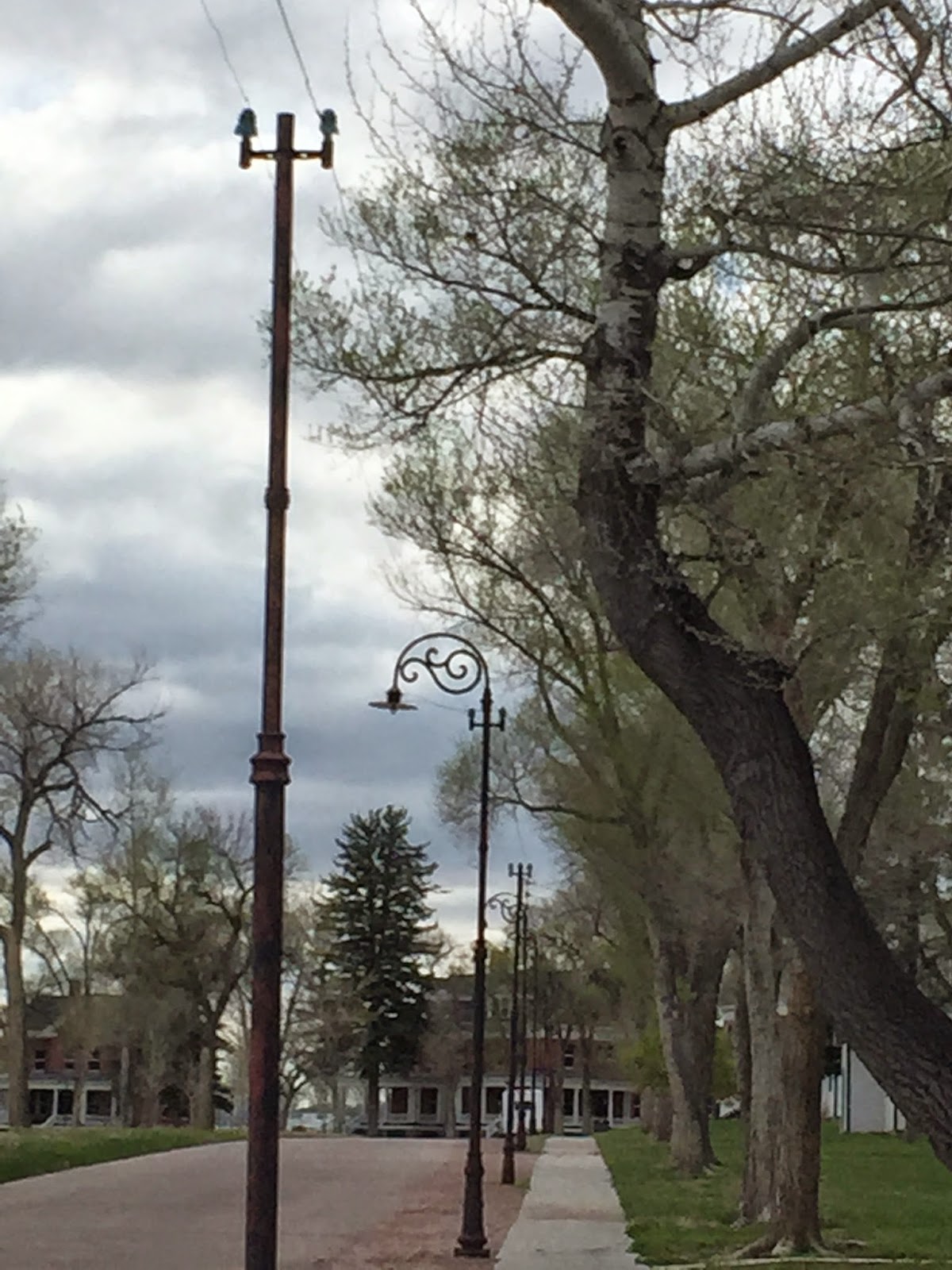There are two fort sites within the Park, the historic Camp Robinson that dealt with the Indians and the more modern Fort Robinson. "Fort Rob" was home to Black soldiers of the Ninth and Tenth Cavalry regiments (called "buffalo soldiers" by the Plains Indians) for 18 years. In the 20th century, the fort became the world's largest military remount depot (acquiring and breeding horses for the army), and in World War II was the site of a K-9 corps training center and a German POW camp.
As we were backing into our site in the campground, this beautiful Airstream drove up and Gary, who had just purchased this 2015 Classic in New Jersey and was returning to his home in Denver, stopped by to say hello. He had stopped for lunch at the park, seen us drive by and came to greet us before he went on his way. The 2015 Classic is newly redesigned and has lots of bells and whistles and elegant touches. We got a tour and it is beautiful! Best wishes to Gary and safe travels!
After unhitching and eating lunch we went looking for the parks resident herd of bison. We walked down the road until we saw them and at the same time came to a sign that said no further hiking or biking. Evidently, in order to get any closer to the bison you have to be in a car - a safety concern.
This is the parade grounds of the historic fort with reconstructed barracks. It was here that the Lakota warrior Crazy Hose surrendered in 1877...
and was mortally wounded that September while resisting imprisonment. A stone marker shows where he was killed.
Two years later, the fort was the site of a battle as part of the famous Cheyenne Outbreak. One hundred and forty-nine Northern Cheyenne Indians, led by Dull Knife, were taken into custody by troops from the fort on October 23, 1878. Imprisoned in the log cavalry barracks, they escaped on January 9, 1879. Fort Robinson soldiers pursued the Cheyenne until the last ones were killed or captured on January 23, 1879.
This is the Fort Robinson U.S. Army Veterinary Hospital, built in 1908.
In this space the army's horses and mules underwent a variety of medical procedures. There are large skylights that provide natural lighting in the room. The large table is an operating table. It could be cranked into a vertical position, a standing horse strapped to it, and the table then cranked back to a horizontal position for the operation.
Warning.
At the entrance to the Fort are two of these markers. One honors Lt. Levi H. Robinson, for whom the camp was named; he had been killed by Indians the month before the camp was established. The other has a plaque that reads - Chief Crazy Horse, Oglala War-Chief of the Sioux Nation, Killed near this spot September 5, 1877. A great Chief of heroic character. He fought to the last to hold his Native Land for the Indian people.
These duplex officers' quarters, of adobe brick construction, were completed in 1887 when Fort Robinson became a cavalry regimental headquarters. A Post Commander's wife wrote that the quarters were provided with running water, the first she had seen during her Army life and the social life was comparable to any large city such as Boston or Washington. Even though they were stationed on the frontier, they were expected to live up to Victorian social customs.
Beautiful street lights in front of Officers' Row.
The Parade Grounds of the modern fort. I think they are so huge because men and horses needed space for maneuvers.
Other happenings at Fort Robinson:
- 1935 - 39 - U.S. Olympic Equestrian Team trained at fort
- 1943 - German POW camp established
- 1948 - Fort declared surplus and turned over to the U.S. Dept. of Agriculture
- 1949 - USDA Beef Cattle Research Station opened; closed in 1971
- 1955 - Fort Robinson State Park acquired by Nebraska Game and Parks Commission











No comments:
Post a Comment